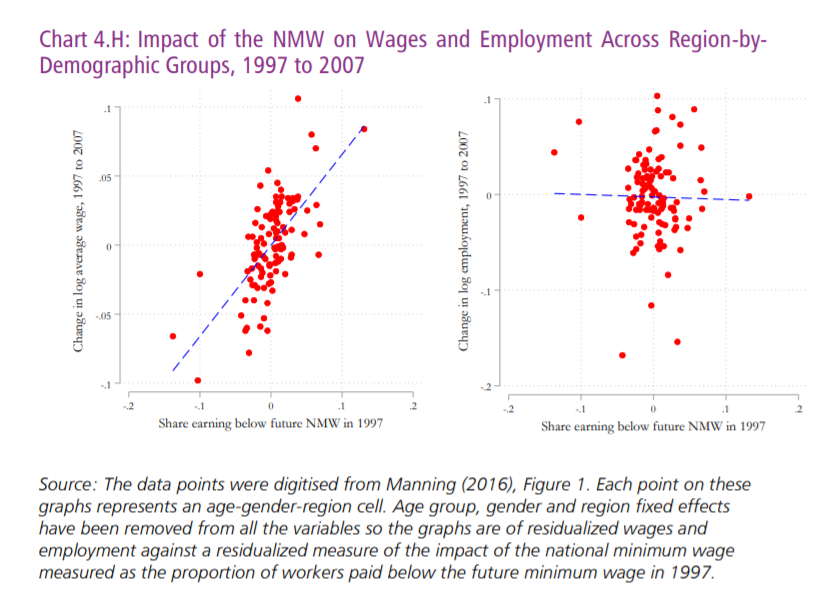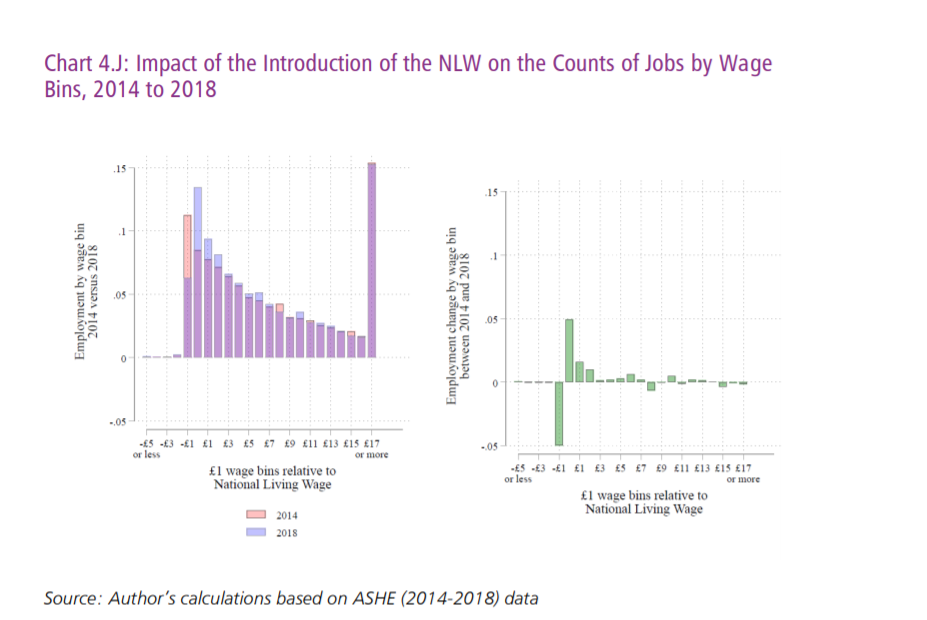Gender categories and food age categories
The main rationale behind the introduction of the minimum wage was that the government wanted to increase the support for the workers and also improve these standards of reward when it comes to the work they do. national living wage and national minimum wage together are deferred as a minimum wage which aims toward protecting the low-income workers when providing incentives for the work done. Besides that, the minimum wage also aims toward helping the organization by driving fairness in the labor market and make that the competition is based on the quality of goods and services and not according to the low prices driven by a low rate of pay. The government believes whoever is entitled to the minimum wage should receive Minimum wage according to the guidelines that are set out. Moreover, through this initiative, the government wanted to support the employers to make sure the minimum wage is paid correctly as well as communicated to workers so that they could raise awareness of entitlement as well as a route for redress.
National minimum wage came into effect from first April 1999, where it covered all the workers who were not self-employed, regardless of their occupation, size of the firm, industry, and the region. A body was called as low Pay Commission was established in 1999 for advising the UK government so that the national minimum wage could be fixed. Each year the LPC commissions and fund research analyzed for the impact of minimum wage and then these searches could be used for evidence which could be used by the government for the recommendations. These recommendations are adopted by the government and they are used for setting up the rates. The main aim of the UK government was to make sure that they could effectively raise the minimum wage for workers especially those who are above the age of 21. The adult rate was fixed at £3.60 per hour for all those workers who are above the age of 22 whereas workers between 18-21 were £3.00 whereas trainee level of the adults who were working on the new work was given £3.20 whereas the worker under the age of 16-19 was initially exempted. Before the introduction of NMW, the coverage of adult rats was fixed at 5.6% whereas the youth rate was 8.2%. After the month of the initiative was introduced, the vast majority of the employers were obligated to pay the properly hourly rate.
The neoclassical theory it's quite familiar. mandate minimum wages are considered as any other price floor. It is the mandated wage is considered to exceed the market-clearing wage then it represents a downward sloping labor demand curve, that clearly emphasizes that form has reduced the quantity of the labor which was demanded. the magnitude of this reduction totally depends upon the wage increase as well as the wage elastic city of Labor demand however when it comes to the direction of change then, in that case, it does unambiguously. Moreover, welfare effects will also have an impact on the wage elasticity of demand, are some of the workers might receive higher wages and they are better off whereas on the other hand adult worker whose product is considered to be worth less than the new minimum will be laid off or they will be restricted to work for fewer hours only. if the quantity of the labor is defined as employment then the wage gain of those people who kept their jobs must be traded off against the wage loss of those who lost their jobs.
Under this approach dis-employment is a logically necessary outcome everyone assumes that (1) Form is inclined toward maximizing the profit (2) The low skilled labor market is categorized as competitive and the firms have no monopsony power. according to a neoclassical theory which can accommodate a weakening assumption of 2nd factor that is if the labor market is categorized as monopsonistic, firm tend to exercise the market and pay the workers’ lower than the workers’ MRPL (marginal revenue product). The monopsonistic firm tends to offer higher wages so that they could potentially attract new hires which directly leads to costlier labor expenditure, as well as inefficiency low employment. in that context, a judiciously chosen minimum wage, can potentially increase employment as well as efficiency. However, when it comes to practice labor economists traditionally address monopsony as an empirical curiosum. The more individual low wage organizations typically tend to employ a low percentage of low wage workforce, which clearly demonstrate that monopsony power is limited when it comes to implementation of the practice.
Employment search model
Minimal ranges have been analyzed through a theoretical framework that is based on the job search model. according to this framework, the effect of employment totally depends upon the level of a minimum wage is and also depends upon the impact on the job search intensity, accepted wages, and Lastly the probability of getting the offer of a job. According to research that was conducted by Swinnerton (1996) clearly present or search equilibrium model in which the organization indicates work demand curve which is downward sloping, on labor productivity tend to vary from organization to organization. besides that, the unemployed have imperfect information, the job search is sequential as well as random. Through these events in the author has clearly represented an increase in average labor productivity and have a positive welfare effect in a case where there is a negative impact on employment then also it has the chances that positive welfare would arise.

Evaluations of the National Minimum Wages
Compelling evidence for the long-run impact of the national minimum wage has come from Manning (2016), In his study, the author has constructed group based on region, age, and gender. Moreover, his study evaluated how the change in the log of average wages and the employment rate has varied over the groups between 1997 to 2007. through his study, he has partial out the fixed effect on the age, gender, and region group, and have stated differing trends in the region, as well as the demographic group hence the below chart, is based on residualized outcome and after partially out the fixed effects.

According to Manning (2016) who has used region and demographic variations, have Evaluated 96 group which was categorized by 12 regions, 2 gender categories and food age categories, the affected share was revealed to varied from 6% to 34%. Considering the changes in Group level log employment and log average wages between 2014 to 2018, highlighted in the left panel but the average wage growth was quite much faster after the introduction of NLW in the following groups who have a larger share also affected workers, the regulation coefficient was 0.36. however, there has been no statistically significant relationship that could be pointed out between the shares and employment. the regression coefficient was -0.05. Together it was implied that OWE is around -0.13 Which clearly indicates a very little impact on employment after the introduction of national living wages.

Conclusion
The above discussion and overall evidence that has been presented in the above section provides a clear indication that the effect of minimum wage effect on employment is ‘muted’. Moreover, according to the overall OWE median for the 48 estimates that have been drawn through the various countries and the affected group is around -0.16 which clearly suggests that the Minimum wage has potentially increased the wages compared to any effect on jobs. According to the set of studies that considered the broad group of workers where their OWE is Estimated to be quantitatively is -0.04 which is close to zero, it clearly suggests that job losses are quite small. According to the recent set of studies which have provided an estimate for evaluating the impact of policy and also for rationalizing the divergent estimates in the literature, this literature has confirmed that the impact of a minimum wage in the increase on the job is considerably small.
Another margin of the adjustment has been presented by the scholars such as Coviello, Deserranno, and Persico (2019) that is ‘productivity’, the scholars have used a broader discontinuity design as well as the data from US retailer and to find productivity gains that are concentrated among low-productivity workers, and are particularly high during high unemployment periods which together constituents an efficiency wage model. According to Riley and Bondibene (2017) who have used evidence from UK firms and find evidence of increased Total Factor Productivity (TFP) which they argue is consistent with theories of efficiency wage and training. Finally, as discussed above, there is evidence that higher minimum wages reduce worker turnover. Lower turnover costs (from recruitment and training) also translate into higher productivity per worker; moreover, lower turnover can increase firm incentives to provide general training and raise productivity.
Riley and Bondibene (2017)102 use evidence from UK firms and find evidence of increased Total Factor Productivity (TFP) which they argue is consistent with theories of efficiency wage and training. Finally, as discussed above, there is evidence that higher minimum wages reduce worker turnover. Lower turnover costs (from recruitment and training) also translates into higher productivity per worker; moreover, lower turnover can increase firm incentives to provide general training and raise productivity (Acemoglu and Pischke 1999). 103 4.73 A somewhat different channel for productivity increase comes from the evidence on reallocation – that minimum wages appear to shift employment composition towards higher wage and/or larger firms (Dustmann et al. 2019; Aaronson, Sorkin and French 2018).104 There is a large body of evidence showing that higher wage firms (and larger firms) have higher levels of worker productivity – which suggests that such reallocation can partly raise the level of productivity of low-wage workers. Overall, while the evidence on productivity impact is still limited, both within-firm and across-firm evidence suggests at least some productivity offsets to minimum wage increases. 4.74 What does this overall body of evidence suggest about guiding future policy? It is always difficult to extrapolate from the past evidence to predict the likely effects of more ambitious policies. But it is unlikely that employment effects would exhibit something like a falling off a sharp cliff if you go too far; they are more likely to resemble climbing down a rounded hill. Therefore, it is quite instructive to see if we can detect larger job losses when considering cases where the minimum wage had the biggest bite in the current evidence base. While the evidence from such cases is still limited and incomplete, the estimates from the highest minimum wages in both the UK and other countries paints a broadly consistent picture. In particular, when we consider the evidence from the introduction of the NLW, from the seven U.S. states that have recently implemented large increases in the minimum wage, the large 1966 FLSA expansion in the US during the time the bite was at its peak, and the large increase in the Hungarian minimum wage, the employment effects estimated using these episodes (median OWE) are not very different from the broader evidence base. This is encouraging, as it suggests some additional increase in the “frontier” minimum wage is unlikely to lead to much larger reductions in employment. Of course, this does not mean one can say with certainty there will not be some effects on employment, or that the impact will be negligible for all subgroups. This is why it will be critical to design any exploration of a more ambitious policy with caution, as discussed in the next section
